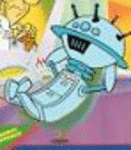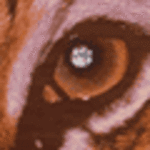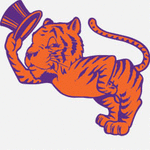|
Replies: 6
| visibility 1
|
CU Guru [1325]
TigerPulse: 100%
Posts: 528
Joined: 3/11/03
|
Clemson's Military History
Oct 2, 2007, 11:12 AM
|
|
Clemson's Military History

This is a repost from something I posted over a year ago on the Donor Board, but since we are approaching the Military
Appreciation Day, I thought the folks on the Main Board should see this before Saturday. I'll try to shed some light on
this subject by covering the basics and introduce you to a few valiant and brave alumni, who, I am proud to say I share
the same academic heritage with. Keep in mind that Clemson University's military heritage covers so many lives it
would be impossible to adequately cover it all here, but here's a sample.

Clemson's impact to America's conflicts is enormous, with over ten thousand alumni who have served in the US
military from the time of the Spanish-American War up through the present war in Iraq and Afghanistan.

From the early days of the World War I, where cadets and professors left Clemson en masse to fight in the war,
Clemson has always been there for the call to duty. Over fifteen hundred of Clemson's alumni fought in World War I,
twenty five were killed.

As the Great Depression hits the United States, Clemson faces critical financial problems and has to impose severe pay
cuts to the professors, yet the professors and students both continue on, facing an uncertain future as war in Europe
grows.

As the 1940s arrive, and the US enters World War II, 6,475 Clemson alumni would enter the service. In fact, Clemson
provided more Army officers for the war than any other institution except West Point and Texas A&M. Sadly, during
the war, 370 would be killed.

During the Korean War, 1500 Clemson alumni would answer the call to duty, with 20 killed in action. In the 1960s the
Counter Guerrillas was formed, and the Clemson ROTC opened to women, later in the 1970s.
But these are just numbers. To really understand this heritage you have to dig deeper, you need to understand the
individuals and their sacrifices. Below I've listed some of the most notable Clemson veterans and their stories.

Marine Lieutenant Colonel Aquilla James Dyess, was awarded the Medal of Honor posthumously. A 1932
Clemson graduate with a B. S. degree in architecture, Dyess was also a member of the Tiger football team under coach
Josh Cody, as shown above. In civilian life, he was a general contractor and assited with a summer camp for boys. In
1936 Dyess became a first lieutenant in the Marine Corps Reserve, where he was also part of the Marine Corps Rifle
Team.

It was on Namur Island where LtCol Dyess showed amazing bravery as he led his troops against heavy Japanese
automatic weapons fire. Not one to direct from the rear, Dyess would always be in front of his men to lead them against
the heaviest of enemy fire. For almost two days Dyess show an amazing bravery, as the Marines were finishing off the
Japanese. Then, on February 2nd, 1944, as LtCol Dyess was directing an attack, he was killed by enemy machine gun
fire on Namur Island.
Lieutenant Colonel Aquilla James Dyess, was awarded the Medal of Honor posthumously for "conspicuous gallantry
and intrepidity at the risk of his life" at the head of his troops during the Battle of Kwajalein, on Namur Island,
Kwajalein Atoll, Marshall Islands, 2 February 1944.

In 1945, the destroyer USS Dyess (DD-880) was named in his honor. The USS Dyess would serve the Navy for 35
years.

Army Air Corps Colonel William L. Leverette was one of only two Americans pilots in World War II to score
seven victories in a single encounter with the enemy. The 1934 Clemson graduate with a degree in engineering, was the
commander of the 37th Fighter Squadron. On October 9, 1943, thirty German dive bombers attacked Leverette's group
of seven Lockheed P-38 Lightnings over the Mediterranean. Leverette himself shot down seven of the Germen dive
bombers, while the rest of his group downed another nine. For this Leverette received the Distinguished Service Cross.

Army Colonel Ben Skardon graduated from Clemson in 1938 with a bachelor's degree in general science and
entered the Army as a second lieutenant. Skardon was captured by the Japanese and was part of the dreaded Bataan
Death March. Thanks to fellow Clemson officers who were with him, they were able to exchange his Clemson ring for
food to keep him alive. Skardon would survive and go on to serve years later in Korea.

Marine Captain Julian Dusenbury found himself in one of the toughest and bloodiest battles of the entire war,
the Battle for Okinawa. The Clemson graduate (class of 1942) was part of a Marine infantry unit called upon to take the
Shuri Castle and the entire Shuri Ridge on the island of Okinawa. The battle was intense and the Japanese came at them
in every direction including through underground tunnels, because, by night fall, Dusenbury's unit got cutoff from the
other units. To make matters worse they were running out of ammunition.
Because it was raining that night, it was difficult to see and it made moving around on that ridge very tricky.
Dusenbury, however, managed to crawl through enemy lines and back again, a number of times, bringing with him
ammunition. Evidently, the Japanese mistook him as one of their own that night. In addition, because of the rain, the
steep hillside made it very difficult to get a good footing.
The next morning the Japanese knew Dusenbury's unit had become cutoff, but what they didn?t realize was the amount
of ammunition Dusenbury's unit had, thanks to his brave act the night before. The Japanese gave Dusenbury's unit
everything they had, but ultimately Dusenbury and his unit held their ground and won the battle for Shuri Castle.
Dusenbury's unit had won the battle, but days later a Japanese sniper shot Dusenbury in the back, severing his spinal
cord and damaging his liver and kidneys. Dusenbury would survive his injuries but would be confined to a wheelchair
the rest of his life.

Air Force Major Rudolf Anderson Jr., was a U2 pilot performing critical missions over Cuba in 1962 during
the Cuban Missile Crisis. Anderson was a 1948 Clemson graduate where he majored in textiles and served in the Air
Force R.O.T.C. On Saturday October 27, 1962, Anderson lost his life as his plane was shot down by the Soviets over
Cuba during a photo reconnaissance run. The Soviets, fearing that they may have gone too far with the Americans by
downing Anderson's plane, announced over Radio Moscow the very next day that they were removing the missiles
from Cuba. Anderson left a wife, two sons, an unborn daughter, and a homeland free from nuclear attack.

These were the kind of photos Anderson would take, the source doesn't reveal if Anderson, in fact, took this photo. On
Jan. 8, 1964, Maj. Rudolf Anderson Jr., the sole casualty of the Cuban Missile Crisis, was posthumously awarded the
first Air Force Cross by order of President John F. Kennedy.

Other notable Clemson veterans were Army Air Corps Colonel Banks McFadden, Army Lieutenant Colonel Strom
Thurmond, Air Force General Mark Edward Bradley, and Marine Brigadier General Alvin S. Sanders just to name
a few. This list could go on and on, and it starts to become clear what the historian Victor Davis Hanson said,
"Thank God we don't have to fight anyone like ourselves!!"

Today, as you read this, Clemson alumni around the globe are continuing this great tradition. For they know the value
of sacrifice, and work, and virtue, are necessary conditions of freedom.

To quote Abraham Lincoln: "Gold is good in its place; but living, brave, patriotic men, are better than gold."
|
|
|
|
 |
Expert [1205]
TigerPulse: 100%
Posts: 779
Joined: 11/30/98
|
HOF Mintaka. Should be pinned at the top of the board.***
Oct 2, 2007, 11:18 AM
|
|
|
|
|
|
|
 |
Freshman [-100]
TigerPulse: 88%
Posts: 708
Joined: 9/4/05
|
great post***
Oct 2, 2007, 11:24 AM
|
|
|
|
|
|
|
 |
All-In [29036]
TigerPulse: 100%
Posts: 36097
Joined: 8/28/00
|
Can anyone hazard a guess as to the year of the first photo?
Oct 2, 2007, 11:39 AM
|
|
I ask because one of those guys looks a heck of a lot like my dad who was in the AF corps as well as Scabbard and Blade in the late 60's
|
|
|
|
|
 |
Orange Blooded [4521]
TigerPulse: 100%
Posts: 3669
Joined: 9/19/05
|
Hmmm, makes me feel kinda foolish. You?
Oct 2, 2007, 11:48 AM
|
|
No more pity party for me.
Thanks Mintaka.
|
|
|
|
|
 |
All-TigerNet [11894]
TigerPulse: 100%
Posts: 7595
Joined: 8/25/05
|
Thanks so much for posting this.***
Oct 2, 2007, 12:14 PM
|
|
|
|
|
|
|
 |
Orange Blooded [2663]
TigerPulse: 76%
Posts: 4303
Joined: 1/4/07
|
I know Ben Skardon. Survived Bataan
Oct 2, 2007, 8:55 PM
|
|
and he would never tell you, unless you knew it already. Gave his Clemson ring to a guard, as I recall, to get enough soup to keep another prisoner alive.
|
|
|
|
|
|
Replies: 6
| visibility 1
|
|
|



 to award
the award.
to award
the award.
























